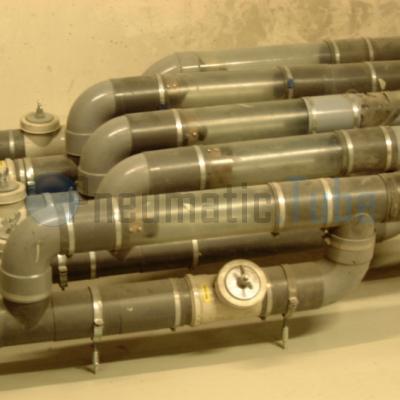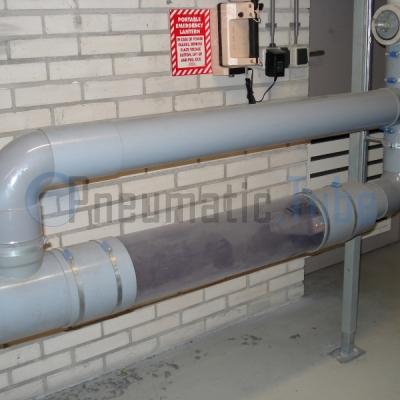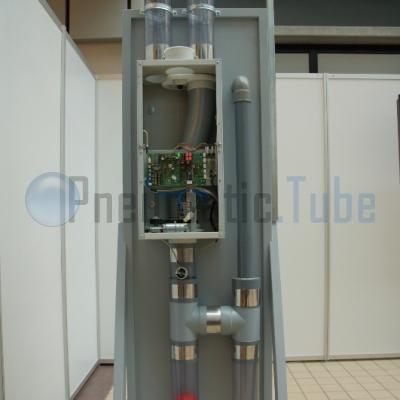Pneumatic Tube Air Break
An air brake is build with two ducts and two air valves. If one valve is open, the other is automaticly closed. The pressure of the blower will do this automaticly, there is no need for an external control.
The valves are placed in such a way that when a carrier is sucked to the blower, the air will go through the bypass pipe.
The carrier will pass the tube switch, which shall switch off the blower. The carrier will be stopped by the air buffer in the tube. The rest of the air will flow through the bypass tube, and has no longer affect to the carrier.
By lengthening the bypass the inhibition of the carrier will be softer.
How does an air break work? Here an explanation »
 Pneumatic Tube, Rohrpost, Buizenpost
Pneumatic Tube, Rohrpost, Buizenpost
Pneumatic Tube Air Break
Published: 27-07-2018
Last updated: 05-01-2019
Show related articles:
Pneumatic Tube Calendar
24 October 1864 (160 years ago)
Commissioning Pneumatic Tube Mail Hamburg, Germany
31 October 1874 (150 years ago)
Pneumatic Tube Mail railway in London, Great Britain out of business
1 October 1879 (146 years ago)
The Mix & Genest company was founded by the businessman Wilhelm Mix and the engineer Werner Genest in Berlin-Schöneberg
7 October 1897 (128 years ago)
Commissioning Pneumatic Tube Mail New York USA


